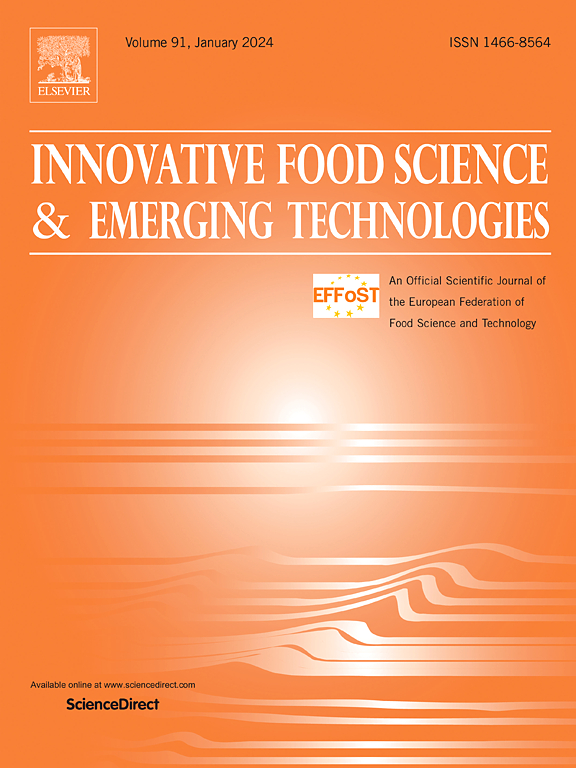米粉射频加热过程中理化性质的预测及变化规律
IF 6.8
1区 农林科学
Q1 FOOD SCIENCE & TECHNOLOGY
Innovative Food Science & Emerging Technologies
Pub Date : 2025-07-22
DOI:10.1016/j.ifset.2025.104126
引用次数: 0
摘要
国产米粉结构成形性差,限制了其在无谷蛋白食品加工中的应用。射频加热作为一种新兴的电介质加热技术,通过分子偶极子旋转和离子传导实现体积加热,提高了米粉的加热速率和能效,是传统加热方法的一种很有前途的替代方法。传统的质量评估既耗时又昂贵,这促使人们采用反向传播人工神经网络(BP-ANN),因为它们在解码多参数过程输入和物理化学输出之间复杂的非线性关系方面表现出优势。本研究考察了不同处理温度(40 ~ 70℃)和米浆浓度(5% ~ 40%)下射频技术对米粉糊化度(GD)、糊化、功能和流变性能的影响,并成功建立了BP-ANN质量预测模型。结果表明,射频处理提高了GD和功能性能(吸水能力提高了3.14倍,吸油能力提高了82.7%),但过度加热(>;55°C)降低粘度和凝胶网络稳定性。多因素分析表明,处理温度是影响米粉理化变化的主要因素。BP-ANN实现了高精度预测,优于其他机器学习方法。研究结果为射频加热对米粉进行智能改性提供了可行性。本文章由计算机程序翻译,如有差异,请以英文原文为准。
Prediction and changing patterns of physicochemical properties of rice flour during radio frequency heating
Poor structural formability of native rice flour limits its application in gluten-free food processing. Radio frequency (RF) heating, as an emerging dielectric heating technology, is a promising alternative to conventional thermal methods as it enables volumetric heating through molecular dipole rotation and ionic conduction, achieving faster heating rates and higher energy efficiency for improving rice flour properties. Conventional quality assessment is time-consuming and costly, motivating adoption of back-propagation artificial neural networks (BP-ANN) due to their demonstrated superiority in decoding complex nonlinear relationships between multi-parametric process inputs and physicochemical outputs. This study investigated the effects of RF technology under different treatment temperatures (40–70 °C) and rice slurry concentrations (5 %–40 %) on the gelatinization degree (GD), pasting, functional, and rheological properties of rice flour and successfully established a quality prediction model using BP-ANN. Results showed that RF treatment enhanced GD and functional properties (e.g., water absorption capacity increased by 3.14 times, oil absorption capacity by 82.7 %), but excessive heating (> 55 °C) compromised viscosity and gel network stability. Multivariate analysis revealed that the treatment temperature was the primary factor driving physicochemical changes in rice flour. The BP-ANN achieved high-precision predictions, outperforming other machine learning methods. These findings provide feasibility for the intelligent modification of rice flour during RF heating.
求助全文
通过发布文献求助,成功后即可免费获取论文全文。
去求助
来源期刊
CiteScore
12.00
自引率
6.10%
发文量
259
审稿时长
25 days
期刊介绍:
Innovative Food Science and Emerging Technologies (IFSET) aims to provide the highest quality original contributions and few, mainly upon invitation, reviews on and highly innovative developments in food science and emerging food process technologies. The significance of the results either for the science community or for industrial R&D groups must be specified. Papers submitted must be of highest scientific quality and only those advancing current scientific knowledge and understanding or with technical relevance will be considered.

 求助内容:
求助内容: 应助结果提醒方式:
应助结果提醒方式:


